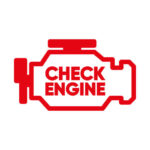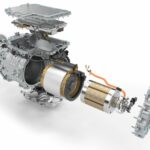Slide 1. Introduction.
The class develops what corrective maintenance of a vehicle is and what it is used for, as well as its implications for fleet management.
Slide 2. Corrective maintenance of a vehicle.
- The importance of corrective maintenance.
Corrective maintenance is essential for keeping the vehicle in optimal working condition. Although it may involve higher costs, doing it right ensures that your vehicle remains safe and efficient.
Acting in a timely manner is essential to prevent further damage and ensure safe driving. Remember that your fleet vehicle is an investment, and addressing its mechanical needs not only keeps it operational but also improves safety.
Corrective maintenance is not an option, but an obligation to preserve your vehicle. Recognizing the signs of failure and addressing them promptly will make the difference between a vehicle in good condition and one that can cause you problems.
Caring for your car is essential to ensure its performance and extend its useful life. When a vehicle has a malfunction that affects its performance or puts it out of service, corrective maintenance comes into play. This type of intervention is aimed at repairing existing faults and returning the car to an operational state.
Although it can be more expensive than other strategies, such as preventive and predictive maintenance, corrective maintenance is essential when a fault occurs.
- What is corrective maintenance?.
Corrective maintenance consists of repairing a vehicle to fix faults or breakdowns that have already occurred. Its main objective is to restore the vehicle's operation and prevent further damage.
These repairs usually require a significant investment in spare parts and specialized labor, especially if the breakdown affects key components such as the engine, suspension, or brake system.
- Differences between corrective and preventive maintenance.
Although both seek to keep the vehicle in good condition, their approach is different.
- Preventive maintenance.
This is carried out on a scheduled basis to prevent breakdowns.
- Corrective maintenance.
This is applied when a breakdown has already occurred.
- Costs.
Corrective maintenance is usually more expensive due to the severity of the damage and the time required to repair it.
- Time of intervention.
Preventive maintenance acts before breakdowns occur, while corrective maintenance responds to existing breakdowns.
- When is corrective maintenance performed?.
The most common corrective repairs include:
- Engine: Loss of power, unusual noises, or oil leaks.
- Turbo: Loss of pressure in the intake manifold or oil leaks.
- Timing belt: Wear or breakage due to mileage.
- Battery: Loss of voltage.
- Suspension: Instability or discomfort when driving.
- Tires: Damage such as punctures or excessive wear.
- Brakes: Repair of discs, pads, or hydraulic systems.
- Steering and transmission: Problems with maneuverability or gear changes.
- Climate control: Adjustments to the air conditioning or heating.
- Cooling system: Solution to overheating.
- Particulate filter: Saturation due to carbon particles.
- Bodywork and paintwork: Cosmetic repairs due to dents or wear and tear.
- Fluid leaks: Engine oil or coolant. Requires immediate attention to avoid major engine problems.
- Electronic control units: It is important to diagnose and repair any electronic faults, as they can affect engine performance and vehicle safety.
- Electrical systems: Faults in lights, windows, or entertainment systems.
- Warning lights: If warning lights on the dashboard, such as the engine or battery light, suddenly come on, action must be taken to prevent further damage.
- Windshield wiper blades: Wear and tear from use.
- Types of corrective maintenance.
Corrective maintenance is divided into two main categories.
- Contingent.
This is carried out when the fault prevents the vehicle from functioning. It is a mechanical emergency that requires immediate attention, such as an engine that won't start or a completely inoperative brake system.
- Scheduled.
This is carried out when the malfunction does not prevent the vehicle from operating, but it needs to be repaired to avoid major problems.
It is applied when the vehicle can still be driven, but needs repairs to avoid major problems, such as fixing oil leaks or replacing worn parts. For example, repairing oil leaks or replacing worn parts.
- Advantages and disadvantages of corrective maintenance.
Like any procedure, this type of maintenance has positive and negative aspects:
- Advantages.
ü Prevents permanent damage to the car.
ü Improves safety by correcting mechanical faults that could cause accidents.
ü Extends the life of the vehicle.
ü Less planning.
Requires less planning than preventive maintenance, even when scheduling repairs.
- Disadvantages.
ü It is more expensive than preventive and predictive maintenance.
ü The car may be out of service for an extended period of time.
ü It is a reactive action that could have been avoided with proper preventive maintenance.
- Implications for fleet management.
The main consequence is the cost of the breakdown and the time the vehicle is out of service.
As these breakdowns can happen at any time, the vehicle is unavailable to provide the service, meaning that another vehicle and driver must cover the route or job, increasing their working hours.
As there are always vehicles that break down, the size of the fleet must be increased in order to have vehicles that can provide the service, especially in fleets with very old vehicles or high mileage, where wear and tear leads to many more breakdowns.
Vehicles that have reached a certain age or mileage are prone to breakdowns, and fleet managers usually know this information by make and model based on their experience.
If the cost of the breakdown is greater than the residual value of the vehicle, the best option is not to repair the vehicle and to replace it with a new one.
In a vehicle rental or leasing company, if the breakdown occurs while the vehicle is being used by the customer, it is a major inconvenience and a loss of image for the company, in addition to the replacement of the vehicle with another.
Corrective maintenance is usually more expensive than preventive or predictive maintenance. It should be noted that the cost of the repair must be added to the time the vehicle is unavailable, and that the size of the fleet must be larger.
In a vehicle fleet, corrective maintenance is not recommended as a maintenance policy. Preventive and predictive maintenance is always recommended because of the cost savings, the vehicles are available for longer to provide the service, and the size of the fleet is smaller.
The following are measures to minimize corrective maintenance.
- Have a vehicle maintenance plan and schedule.
- Perform preventive maintenance on vehicles.
- Perform predictive maintenance such as on-site or remote diagnosis, or the use of artificial intelligence to predict breakdowns.
- Perform maintenance according to the manufacturer's instructions and within the established period.
- Use official spare parts or alternative premium brands.
- Maintenance must be performed by qualified technicians in an appropriate workshop.
- Provide driver training on the importance of preventative maintenance and vehicle care.
Slide 3. Thank you for your time.
The class has developed what corrective vehicle maintenance is and what it is used for, as well as its implications for fleet management, see you soon.
Download the audio




















